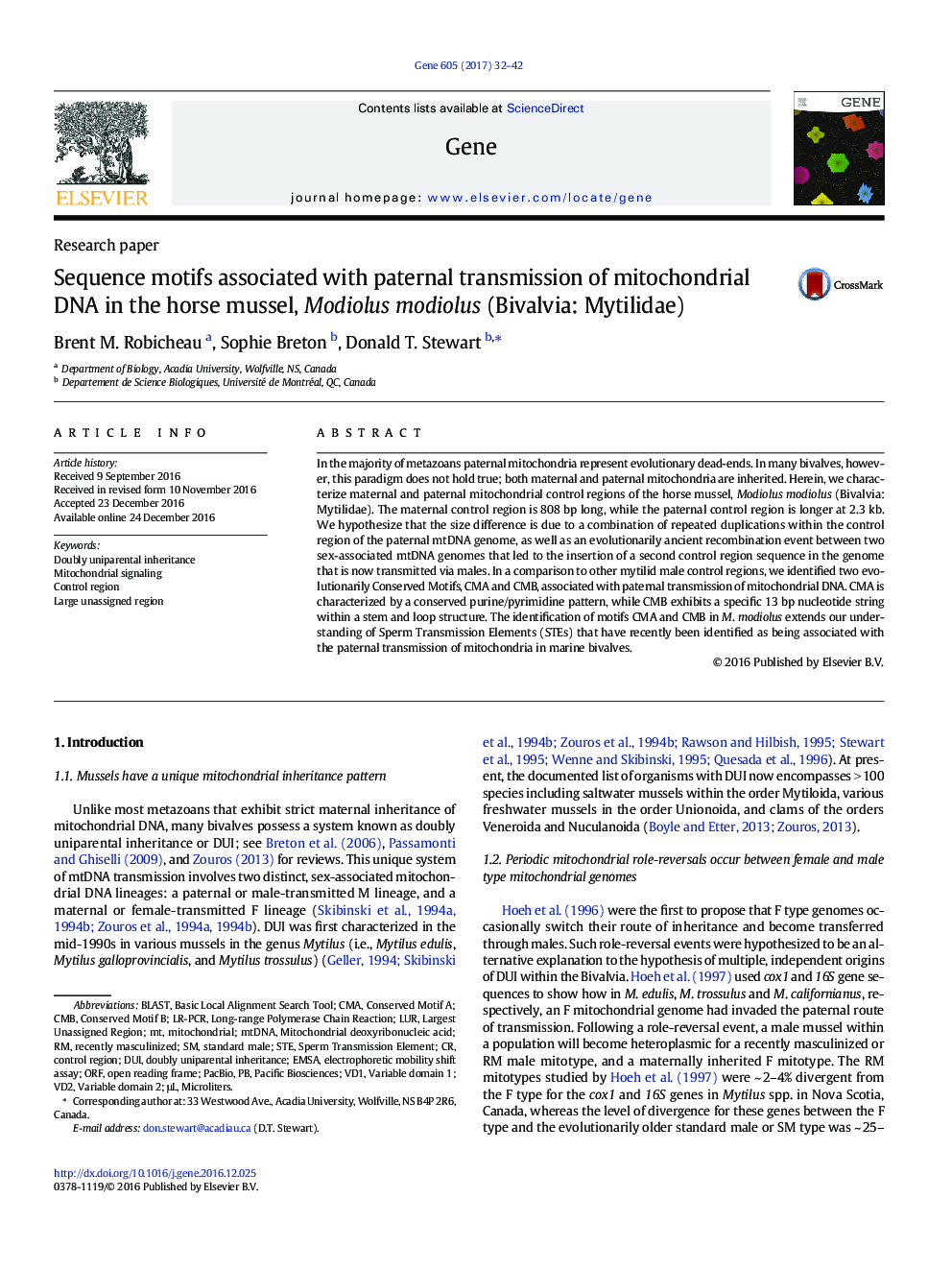| Article ID | Journal | Published Year | Pages | File Type |
|---|---|---|---|---|
| 5589781 | Gene | 2017 | 11 Pages |
Abstract
In the majority of metazoans paternal mitochondria represent evolutionary dead-ends. In many bivalves, however, this paradigm does not hold true; both maternal and paternal mitochondria are inherited. Herein, we characterize maternal and paternal mitochondrial control regions of the horse mussel, Modiolus modiolus (Bivalvia: Mytilidae). The maternal control region is 808Â bp long, while the paternal control region is longer at 2.3Â kb. We hypothesize that the size difference is due to a combination of repeated duplications within the control region of the paternal mtDNA genome, as well as an evolutionarily ancient recombination event between two sex-associated mtDNA genomes that led to the insertion of a second control region sequence in the genome that is now transmitted via males. In a comparison to other mytilid male control regions, we identified two evolutionarily Conserved Motifs, CMA and CMB, associated with paternal transmission of mitochondrial DNA. CMA is characterized by a conserved purine/pyrimidine pattern, while CMB exhibits a specific 13Â bp nucleotide string within a stem and loop structure. The identification of motifs CMA and CMB in M. modiolus extends our understanding of Sperm Transmission Elements (STEs) that have recently been identified as being associated with the paternal transmission of mitochondria in marine bivalves.
Keywords
CMAMitochondrial signalingORFLR-PCRμLCMBdoubly uniparental inheritanceDUISTEElectrophoretic mobility shift assayBLAST, basic local alignment search toolMitochondrial Deoxyribonucleic acidBlastmtDNAEMSA یا electrophoretic mobility shift assay Pacific Biosciencesopen reading frameLURControl regionMitochondrial
Related Topics
Life Sciences
Biochemistry, Genetics and Molecular Biology
Genetics
Authors
Brent M. Robicheau, Sophie Breton, Donald T. Stewart,
